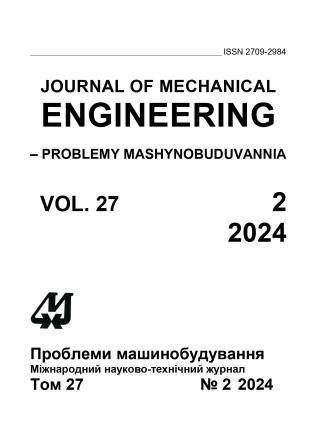Calculated Assessment of Crack Development Under Cyclic Loading of the Plate Using the Parameters of Dispersed Damage of the Material
Abstract
The reliable operation of structures and energy machines is related to ensuring thermal strength and durability of their elements and assemblies. Currently, a difficult situation has developed in the modern energy market; the equipment works in difficult conditions and, as a result, it is operated in variable modes, which causes accelerated wear of the resource. Ensuring the reliable use of power machines and structures of various complexity requires a calculated assessment of the thermal strength and durability of their elements, which is based on the application of new methods and calculation models taking into account a number of important factors, including damage, heterogeneity of material properties, the influence of non-stationary temperature fields and the presence of cracks. This paper is devoted to the development of the methodology for crack growth calculations in plate elements of structures under cyclic loading in an elastic-plastic setting using the concept of the accumulation of dispersed damage in the material. At the top of the crack, the processes of sign-changing elastic-plastic deformation and crack resistance of the material are simulated using data from fatigue tests of smooth samples. The thermal stress state of the structure at different loading modes is determined using finite element software for several fixed crack depths. The kinetics of a surface crack in a plate, from both edges of which cracks grow symmetrically under non-zero cyclic loading by tensile stresses, is considered in the paper. Elastic-plastic problems were solved for the cases of plane deformation and plane stress state, the amplitudes of deformation intensities and the number of loading cycles were obtained depending on the depth of crack growth. It was established that the type of stress state significantly affects the destruction of the material. Evaluation of crack development using the concept of accumulation of dispersed damage in the material has advantages for flat and axisymmetric problems, since it has no limitations for the size of the plastic zone and small crack depth. After some improvements, the calculation method can be used for three-dimensional problems of thermoplasticity.
Downloads
Published
Issue
Section
License
Copyright (c) 2024 П. П. Гонтаровський, Н. Г. Гармаш, І. І. Мележик, Т. В. Протасова

This work is licensed under a Creative Commons Attribution-NoDerivatives 4.0 International License.
All authors agree with the following conditions:
- The authors reserve the right to claim authorship of their work and transfer to the journal the right of first publication of the work under the license agreement (the agreement).
- Authors have a right to conclude independently additional agreement on non-exclusive spreading the work in the form in which it was published by the jpurnal (for example, to place the work in institution repository or to publish as a part of a monograph), providing a link to the first publication of the work in this journal.
- Journal policy allows authors to place the manuscript in the Internet (for example, in the institution repository or on a personal web sites) both before its submission to the editorial board and during its editorial processing, as this ensures the productive scientific discussion and impact positively on the efficiency and dynamics of citation of published work (see The Effect of Open Access).

